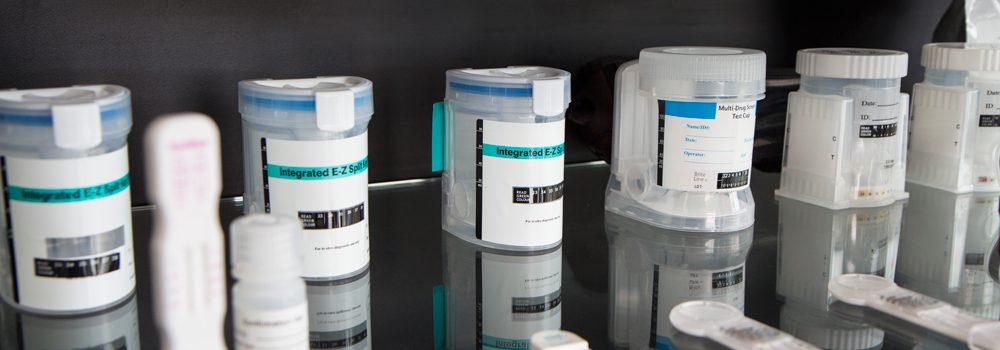Most road safety conversations in Malaysia focus on drink‑driving, but drug‑driving is an equally serious hidden threat—especially with substances like ganja, syabu (meth), ecstasy, and LSD becoming more common.
Reports have shown that there are over 700,000 drug users in Malaysia, highlighting the need for better awareness on the dangers of operating vehicles and machinery while under the influence of not just alcohol, but also drugs.
Below are some primary effects of different drugs on driving abilities:
Ganja (cannabis)
THC in ganja impairs coordination, reaction time, and spatial awareness. Users often underestimate their impairment, even hours later. Research shows cannabis can affect driving up to 8 hours later.
Syabu/Ice (methamphetamines)
Syabu speeds up the mind and body, causing the following effects
- Overconfidence
- Impulsive behaviour
- Aggressive tendencies (including driving)
- Risk taking behaviours
Ecstasy (MDMA)
MDMA impairs drivers the following ways
- Disrupts sensory perception
- Slows coordination
- Impairs judgement
- Slows down reaction times.
Heroin (afiun)
Heroin slows down brain and body functions, causing the following effects
- Drowsiness and sedation
- Slowed reaction time
- Nodding off at the wheel
- Impaired concentration and awareness
LSD
LSD alters perception and cognition, causing the following effects
- Hallucinations (visual and auditory)
- Distorted sense of time and space
- Impaired judgment and decision-making
- Unpredictable emotional reactions
Why Malaysia needs better drug-driving prevention
-
Rising drug-driving incidents: During festive roadblocks in 2024, over 40 commercial vehicle drivers were caught daily for drug driving—approximately one in every 13 tested positive. This alarming trend underlines the urgent need for stronger preventative measures.
-
Policy moves underway: The Inspector-General of Police has proposed mandatory urine testing for bus and lorry drivers—even in the absence of a crash—signifying a pivotal step toward proactive enforcement.
-
Gaps in current law: Under Malaysian legislation, drivers suspected of drug impairment can only be prosecuted if they’ve caused an accident. Individuals found driving under the influence of drugs—without a collision—face licence suspension but not criminal charges. This reactive approach leaves a major enforcement void.
- Calls for change: An opinion piece from the New Straits Times highlights this legal shortcoming, urging reform to prevent drug driving before tragedy strikes .
Together, these trends and legal limitations demonstrate a clear need for Malaysia to adopt more proactive drug-driving prevention—emphasising testing and enforcement even when no crash has occurred.
Is drug driving safer than drunk driving?
The short answer: No — and in some cases, it can be even more dangerous.
While drunk driving is widely recognised as a serious offence, drug driving is often underestimated. Yet both forms of impairment drastically reduce a driver’s ability to react, make decisions, and stay alert behind the wheel.
Here’s how they compare:
|
Factor |
Alcohol (Drunk Driving) |
Drugs (Drug Driving) |
|
Onset |
Rapid with high doses |
Varies by drug — can be delayed or last longer |
|
Duration |
Generally wears off in 6–12 hours |
Effects can linger for up to 24+ hours |
|
Common Effects |
Slowed reaction time, blurred vision, poor coordination |
Can include hallucinations, aggression, drowsiness, overconfidence, or paranoia |
|
Detection |
Easily detected with breathalysers |
Harder to detect — requires saliva or urine testing |
|
User Awareness |
More likely to recognise intoxication |
May not realise they’re impaired, especially with cannabis or prescription drugs |
The danger of drug driving lies in its unpredictability — the effects vary depending on the drug, dose, and person. A driver on syabu may speed and take dangerous risks. Someone on ganja may react too slowly to hazards. And LSD or ecstasy can cause full sensory distortion — an obvious road hazard.
Ultimately, any substance that impairs your thinking, coordination, or perception makes you unfit to drive. Whether it’s alcohol or drugs, the risk is real — and so are the consequences.
Final thoughts
Drug driving may not get the same spotlight as drink driving in Malaysia, but its risks are just as deadly—if not more so. From the delayed effects of ganja to the reckless aggression caused by syabu, each drug presents its own dangers on the road.
Combined with outdated laws and limited testing, it’s clear Malaysia must act swiftly to prevent these avoidable tragedies. Whether you're a policymaker, employer, or everyday driver, it’s time to treat drug driving with the seriousness it deserves. Because when it comes to road safety, impairment is impairment—no matter the substance.
Contact Andatech to find the right drug testing kit to suit your drug testing needs.
Disclaimer: The information provided in this article is for general reference only. Please seek advice from professionals according to your business’s needs.
Written by Andatech Malaysia









